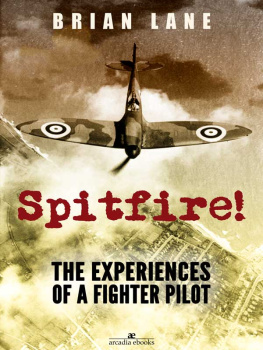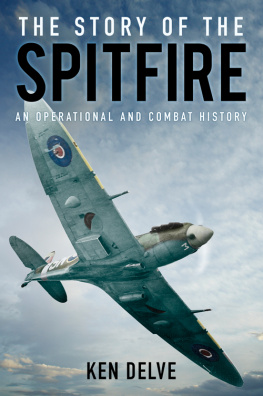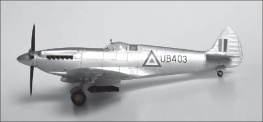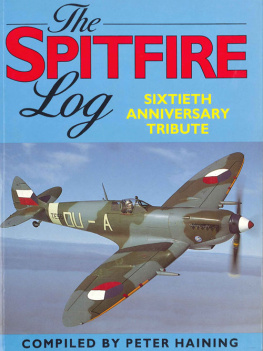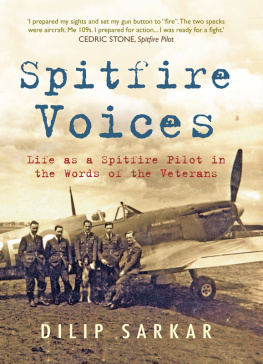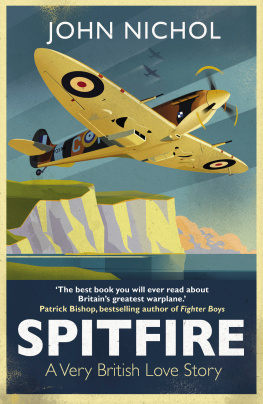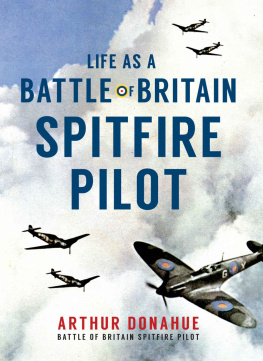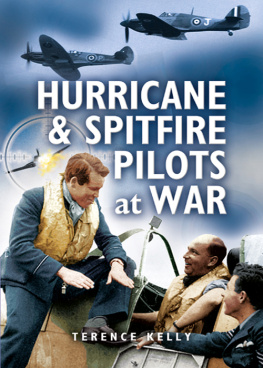Contents
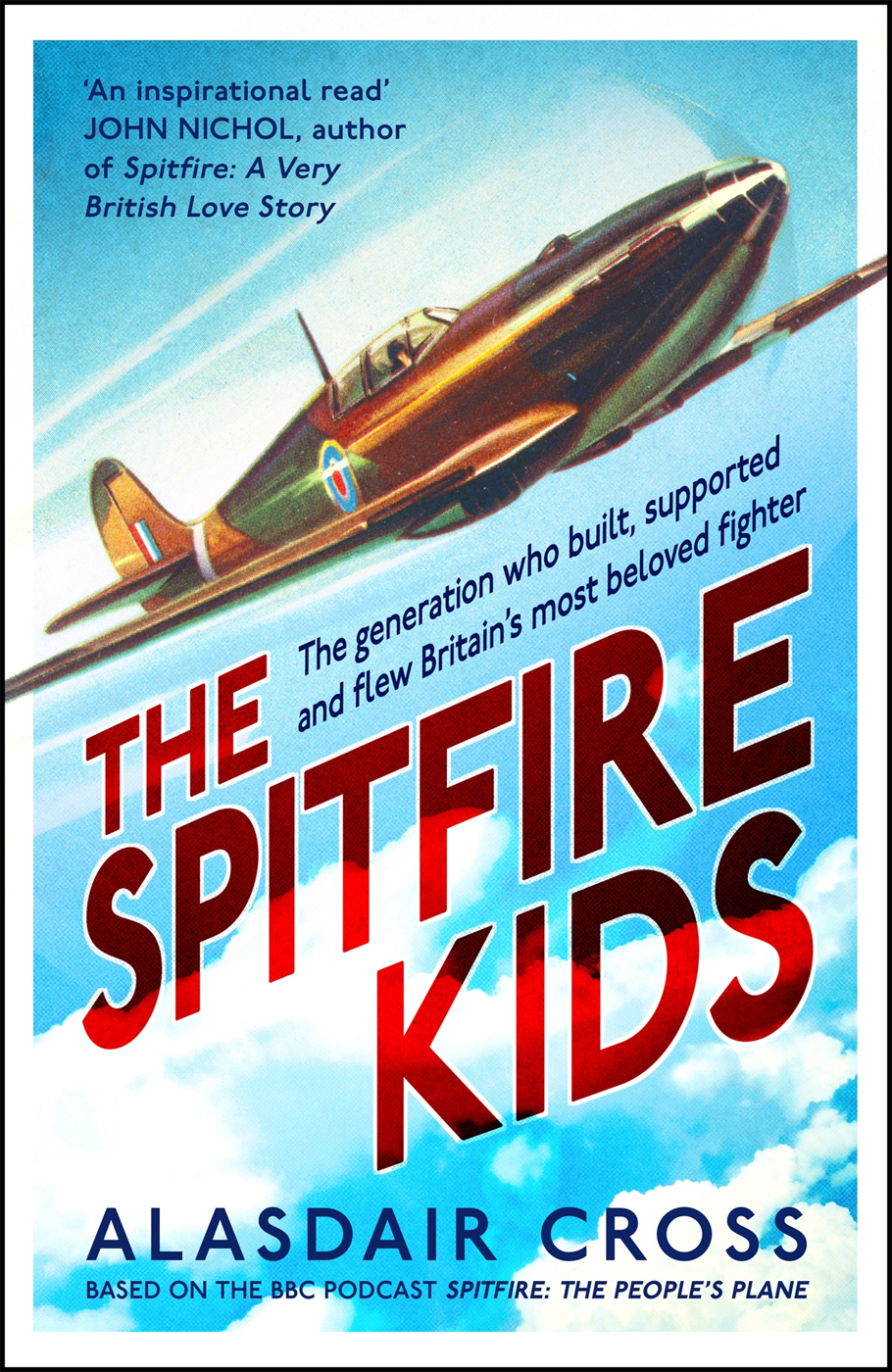
Copyright 2021 Alasdair Cross
BBC World Service podcast series, Spitfire: The Peoples Plane, Copyright 2020 BBC
By arrangement with the BBC
The BBC World Service logo is a trademark of the
British Broadcasting Corporation and is used under licence.
BBC logo BBC 2018
The right of Alasdair Cross to be identified as the Author of the Work has been asserted by him in accordance with the Copyright, Designs and Patents Act 1988.
First published [in Great Britain] in 2021 by Headline Publishing Group
First published as an eBook in Great Britain
by Headline Publishing Group in 2021
Apart from any use permitted under UK copyright law, this publication may only be reproduced, stored, or transmitted, in any form, or by any means, with prior permission in writing of the publishers or, in the case of reprographic production, in accordance with the terms of licences issued by the Copyright Licensing Agency.
Every effort has been made to fulfil requirements with regard to reproducing copyright material. The author and publisher will be glad to rectify any omissions at the earliest opportunity.
For text and image permissions, please see .
Cataloguing in Publication Data is available from the British Library
Jacket design by Patrick Insole
Jacket images Roger Doutran/Mary Evans Picture Library (front);
Bill Cross/Daily Mail (back, inset), Tomas Picka (back, Spitfire) and J. Nattapat (sky), all Shutterstock
Author photograph Alasdair Cross
Hardback ISBN: 978 1 4722 8196 8
eISBN: 978 1 4722 8197 5
HEADLINE PUBLISHING GROUP
An Hachette UK Company
Carmelite House
50 Victoria Embankment
London EC4Y 0DZ
www.headline.co.uk
www.hachette.co.uk

ALASDAIR CROSS is a successful radio and TV producer with the BBC. Brought up in the Orkney Islands, an annual summer treat was Britains smallest air show, once memorably visited by a powder pink Spitfire. He has worked on BBCs Coast and Countryfile and his radio series include BBC Radio Fours Terror Through Time with Fergal Keane and Neil Olivers Iron Curtain as well as the BBC World Service podcast Spitfire:The Peoples Plane.
Historical Advisor: David Key runs the Supermariners website which researches and reconstructs the stories of the men and women who designed and built the Spitfire.
An inspirational read celebrating the incredible young people who gave so much for this iconic British aircraft John Nichol, bestselling author of Spitfire: A Very British Love Story
Read Spitfire Kids and youll start believing this plane has a pulse! Tessa Dunlop, broadcaster and bestselling author of Century Girls
Draws on unpublished diaries and archive recordings to chronicle the extraordinary national effort to construct the fighter aircraft that gave the Allies a critical edge over the Luftwaffe. The Times
A truly epic account of the actual and symbolic role the plane played in defending Britain in the Second World War. The Sunday Times
Tells the inspiring story of how ordinary citizens came together to build the famous Battle of Britain aircraft. The Observer
The story of how these fast and lethal little planes helped win the Second World War is stirringly told in this new BBC series. The Mail on Sunday

The Battle of Britain was fought and won by teenagers. The average age of a fighter pilot was just twenty years old. Many of the men and women who designed and built their planes were even younger. Spitfire Kids is based on the hit BBC World Service podcast Spitfire: The Peoples Story, and uses contemporary diaries and memoirs, many of them previously unpublished, to tell the story of Britains most iconic fighter aircraft through the voices of the young Britons who risked everything to design, build and fly her.
This isnt a story of stiff-upper lips, stoical moustaches and aerial heroics; its a story of love and loss, a story of young people tested to the very limits of their endurance. They worked in factories building the parts that were vital to keep the Royal Air Force fully operational whilst all around them the Luftwaffe above tried to bomb them into destruction. Many joined up to work in the vital services of air defence, constructing radar systems, coordinating supplies to the bases, and, ferrying the planes to new bases for eager young pilots to take to the skies to defeat the enemy.
These were young people who won a battle that turned a war. Through fresh interviews and war diaries and personal correspondence, BBC radio producer Alasdair Cross recounts an incredible tale of courage and sacrifice that celebrates arguably Britains greatest generation.
Southampton doesnt care much for the land. Of course it has some lovely old buildings and leafy suburbs, like most small English cities, but thats never where your eye is drawn. Its a city built from water. Stay a while and its the land that seems transitory, ebbing and flowing while the Itchen, the Solent, the Channel and the Atlantic are the citys permanent mooring points.
The seaplanes that launched from the Woolston slipway, the warships built at John I. Thornycroft next door, and the Titanic and all the other great transatlantic liners that slid from their berths across the river: theyre what define the city, all of them straining to escape to the ocean, all drawn to the great world beyond.
In 1940 this town, so used to looking out, was suddenly forced to retreat inward. Its people looked to the surrounding fields and woodland for shelter from incessant bombs. They looked deep within for the reserves of courage they would need to rebuild the smouldering wrecks of their docks, factories and homes.
Geoff Wheeler, my guide to Southamptons riverside, is a brilliant spinner of tales. His uncles worked in the Spitfire factory and his father was a policeman who endured shift after shift without rest at the height of the Southampton Blitz. With a wave of his hands and a few well-chosen words, these deathly quiet docks and warehouses are once more buzzing with industry, the river alive with grand ships. And in the sky? Spitfires, of course.
Geoff unlocks a gate in a chain-link fence and within a few steps were on a greasy black-brick slipway. This is the last relic of the original Spitfire factory. Its here that workers stopped for lunch, dipping their tired feet in the River Itchen. Its here that they sheltered from German bombs, caught out in the open because the siren sounded too late or not at all. And its here that elegant silver seaplanes first slipped into the water the planes that would become the Spitfire.
In the 1930s, Geoff tells me, this was the Silicon Valley of its time, a true hi-tech hub. It was here that the worlds fastest planes were built alongside cutting-edge destroyers and corvettes, and the vital parts for almost every aspect of mechanised modern life. Geoff pulls out a sepia photo of the Supermarine Woolston works taken from the air. Right where were standing, by an enormous concrete pillar supporting the thundering traffic of the Itchen Bridge above, this was K Shop, where the very latest in aero technology was bent and shaped for flight.


